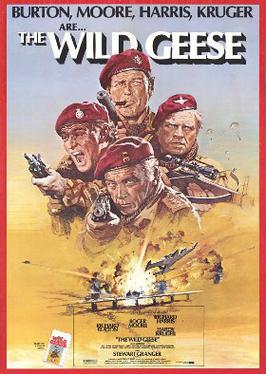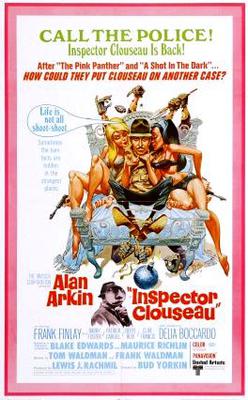The year 1964 in film involved some significant events, including three highly successful musical films, Mary Poppins,My Fair Lady, and The Umbrellas of Cherbourg.
The year 1958 in film in the US involved some significant events, including the hit musicals South Pacific and Gigi, the latter of which won nine Academy Awards, including Best Picture and Best Director.

Michael Rennie was a British film, television and stage actor, who had leading roles in a number of Hollywood films, including his portrayal of the space visitor Klaatu in the science fiction film The Day the Earth Stood Still (1951). In a career spanning more than 30 years, Rennie appeared in more than 50 films and in several American television series.

Curtis Lee Hanson was an American film director, screenwriter, and producer. Born in Reno, Nevada, Hanson grew up in Los Angeles. After dropping out of high school, Hanson worked as photographer and editor for Cinema magazine. In the 1970s, Hanson got involved in filmmaking starting with participating to the writing Daniel Haller's The Dunwich Horror (1970) and his directorial debut Sweet Kill (1973), where he lacked creative control to fulfill his vision. While Hanson continued directing, he rose to prominence by being involved in the writing of critically acclaimed films. This includes Daryl Duke's The Silent Partner (1978), Samuel Fuller's White Dog and Carroll Ballard's Never Cry Wolf (1983).
Rudy or Rudi is a masculine given name, sometimes short for Rudolf, Rudolph, Rawad, Rudra, Ruairidh, or variations thereof, a nickname and a surname which may refer to:

Edith Madeleine Carroll was an English actress, popular both in Britain and America in the 1930s and 1940s. At the peak of her success in 1938, she was the world's highest-paid actress.

Secret Agent is a 1936 British espionage thriller film directed by Alfred Hitchcock, adapted from the play by Campbell Dixon, which in turn is loosely based on two stories in the 1927 collection Ashenden: Or the British Agent by W. Somerset Maugham. The film stars Madeleine Carroll, Peter Lorre, John Gielgud, and Robert Young. It also features uncredited appearances by Michael Redgrave, future star of Hitchcock's The Lady Vanishes (1938), Michel Saint-Denis as the Coachman, and Michael Rennie in his film debut.

Roger William Allam is a British actor, who has performed on stage, in film, on television and radio.

The Wild Geese is a 1978 Swiss-British war film starring an ensemble cast led by Richard Burton, Roger Moore, Richard Harris and Hardy Krüger. The film, which was directed by Andrew V. McLaglen, was the result of a long-held ambition of producer Euan Lloyd to make an all-star adventure film in the vein of The Guns of Navarone or Where Eagles Dare. The plot concerns a group of European mercenaries fighting in Africa. The screenplay by Reginald Rose was based on Daniel Carney's unpublished novel The Thin White Line.

Inspector Clouseau is a 1968 British comedy film, and the third installment in The Pink Panther film series. It was directed by Bud Yorkin, written by brothers Frank Waldman and Tom Waldman and stars Alan Arkin as the title character. It was filmed by Mirisch Films at the MGM-British Studios, Borehamwood and in Europe.

The 39 Steps is a 1935 British spy thriller film directed by Alfred Hitchcock, starring Robert Donat and Madeleine Carroll. It is loosely based on the 1915 novel The Thirty-Nine Steps by John Buchan. It concerns a Canadian civilian in London, Richard Hannay, who becomes caught up in preventing an organisation of spies called "The 39 Steps" from stealing British military secrets. Mistakenly accused of the murder of a counter-espionage agent, Hannay goes on the run to Scotland and becomes tangled up with an attractive woman, Pamela, while hoping to stop the spy ring and clear his name.

Ian Hunter was a Cape Colony-born British actor of stage, film and television.

The Prisoner of Zenda is a 1937 American black-and-white adventure film based on Anthony Hope's 1894 novel of the same name and the 1896 play. A lookalike has to step in when his royal distant relative is kidnapped to prevent his coronation. This version is widely considered the best of the many film adaptations of the novel and play.

Third Man on the Mountain is a 1959 American family adventure film by Walt Disney Productions, directed by Ken Annakin and starring Michael Rennie, James MacArthur and Janet Munro. Set during the golden age of alpinism, its plot concerns a young Swiss man who conquers the mountain that killed his father. It is based on Banner in the Sky, a James Ramsey Ullman 1955 novel about the first ascent of the Citadel, and was televised under this name.

Sir Noël Peirce Coward was an English playwright, composer, director, actor, and singer, known for his wit, flamboyance, and what Time magazine called "a sense of personal style, a combination of cheek and chic, pose and poise".

The Italian Job is a 1969 British comedy caper film, written by Troy Kennedy Martin, produced by Michael Deeley, directed by Peter Collinson, and starring Michael Caine. The film's plot centres around Cockney criminal Charlie Croker, recently released from prison, who forms a gang for the job of stealing a cache of gold bullion being transported through the city of Turin, Italy, in an armoured security truck. In addition to Caine, the cast also included Benny Hill, Raf Vallone, Tony Beckley, and Noël Coward; the film was Coward's last before his retirement from acting. The soundtrack was composed by Quincy Jones, featuring the songs "On Days Like These", sung by Matt Monro over the opening credits, and "Getta Bloomin' Move On" during the climactic car chase, which featured Caine among its singers.
Robert Leadam Eddison, OBE was an English actor, who despite his lengthy career as a classical stage actor, is probably most widely remembered in the role of the Grail Knight in Indiana Jones and the Last Crusade. He also played Merlin in the BBC television series The Legend of King Arthur, and the tragic ferryman in The Storyteller episode "The Luck Child".

Rudolph or Rudolf or Rodolphe is a male first name, and, less commonly, a surname. It is an ancient Germanic name deriving from two stems: Hrōþi, Hruod, Hróðr or Hrōð, meaning "fame", "glory" "honour", "renown", and olf meaning "wolf"(Hrōþiwulfaz).

I Was a Spy is a 1933 British thriller film directed by Victor Saville and produced by Michael Balcon. It stars Madeleine Carroll as Marthe Cnockaert, Herbert Marshall, and Conrad Veidt. Based on the 1932 memoir I Was a Spy by Marthe Cnockaert, the film is about her experiences as a Belgian woman who nursed German soldiers during World War I while passing intelligence to the British. The film was produced by Gaumont British Picture Corporation with Woolf & Freedman Film Service and Fox Film Corporation distributing in the United Kingdom and the United States respectively.
This is a summary of 1945 in music in the United Kingdom.















